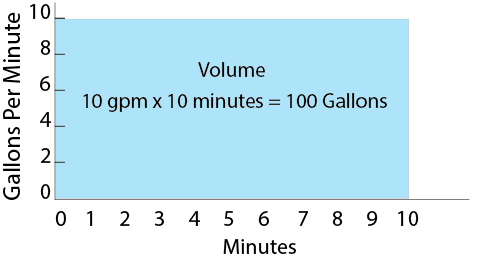Pressure is used to determine other physical properties like flow, volume, level, force, weather system movement, wind tunnel air flow, or even the height and magnitude of a tsunami wave. The more pressure data points that are available over time, the more accurate the determination of the parameter being measured.
Monitoring pressure in a process provides information to operators and engineers that will allow them to optimize or troubleshoot. The pressure of a process over time may be critical in determining the most efficient methods to produce a higher quality product in precise quantities. The pressure may have minimal fluctuation, or change dramatically during a process. Small changes in initial conditions and changes during a process can have large effects on the desired outcome.
Because the pressure in a system can change rapidly, each measurement is a snapshot in time. These pressure snapshots can be added together to get an integrated measurement used to understand the whole process. The rate of measurement directly relates to the accuracy of this aggregated measurement.
Measuring pressure precisely and recording a substantial set of readings with high resolution over time can be critical in any process. Determining where to measure the pressure, how often to measure and over what time span to measure are just a few of the decisions that will be relevant to any specific application.
As an example, let's consider the measurement of flow delivered over a time period where the total volume delivered is the measurement of interest. Flow meters that derive the flow rate using a measurement of the difference in pressure across a restriction, take discrete measurements of pressure in a straight run of pipe and calculate the flow rate for each instance. Flow, "Q" is a function of pressure "F(p)" at any given instance. The volume is calculated by multiplying the flow rate by a period of time. A constant flow rate of 10 gallons per minute will deliver 100 gallons in 10 minutes (see figure 1).
 Figure 1
Figure 1
When the flow rate is changing rapidly, the accuracy of the volume delivered is dependent on the amount of readings taken over time (see figure 2).

Figure 2
The longer the interval between readings, Δt, the greater the error in the final volume calculation. For processes that are changing rapidly, more readings closer together will approximate a continuous curve and translate to higher accuracy in the integrated total derived from the instantaneous readings. The volume of fluid added, or removed from, a system is the integral of flow rate with respect to time.
So let's try to understand some of these parameters that play a crucial role in making accurate process measurement of pressure.
Reading Rates
Pressure transducers that can read and send pressure data quickly will increase the accuracy of systems where the pressure variable changes rapidly. If there is an interest in detecting transient spikes in pressure, reading rates are even more critical.
Mensor transducers typically can read and transmit pressure values 50 times per second in a call/response mode, the CPT6140 High-Speed Pressure Sensor can send readings 250 times per second using a streaming output mode in IEEE-754 format.
Filters
All Mensor transducers use filters. Filters allows the user to tune the transducer in a way that will eliminate erroneous readings but also respond to rapid pressure changes in their particular application.
The filter for the CPT9000 Precision Pressure Transducer takes a percentage of the previous reading averaged with the current reading - as long as the current reading is within the window of the previous reading. The window is set as a percent of full scale of the transducer’s range. If the current reading is outside of the window from the previous reading, the filter is unused and the current reading is displayed without manipulation. This allows tuning of the transducer’s response, as needed. It also allows the transducer to respond to rapid pressure changes without having to change the filter.
The default values are 0.008% FS for the window and a filter of 90%. The filter algorithm may be slightly different for each Mensor transducer, details of each filter can be found in the operation manual for each transducer.
Logging
Logging each reading allows further analysis of systems and can be used to optimize a process. The WIKA CPG1500 Digital Pressure Gauge can log up to one million readings at a rate of 1, 3, 10 or 50 readings per second. The "My WIKA Device" app can be used to upload the logged data for analysis.
Mensor transducers can send live readings to an external computer where they can be collected and analyzed, or to the Mensor Calibration Utility Software where data can be logged with user defined capture parameters and timing. This Mensor utility can collect readings and export the data as a CSV file.
Conclusion
These parameters are critical when selecting a pressure transducer or digital pressure gauge for your process needs or other measurement requirements. Keeping reading rates, filters and data logging features in mind can provide an accurate and time sensitive image of the variability of pressure which can lead to greater precision in your final measurement.
Related Reading:




